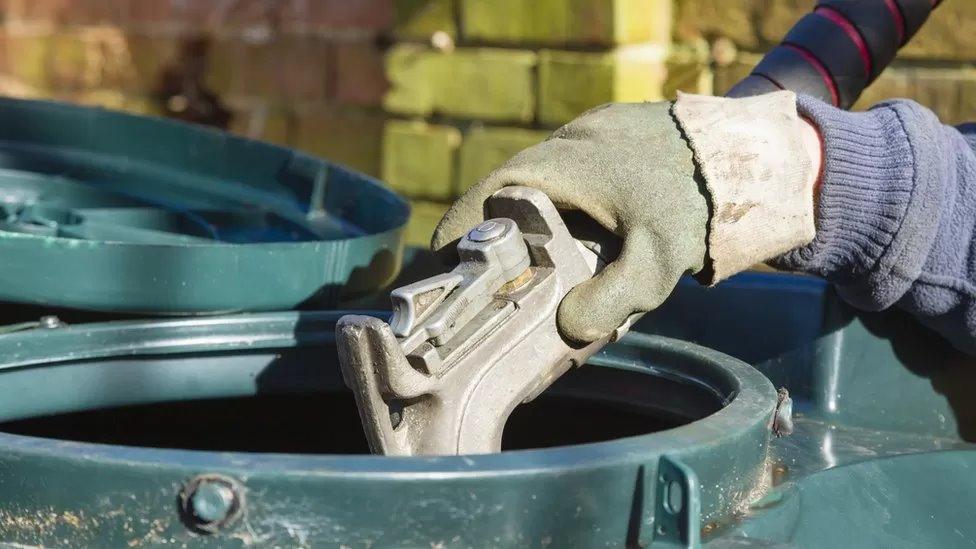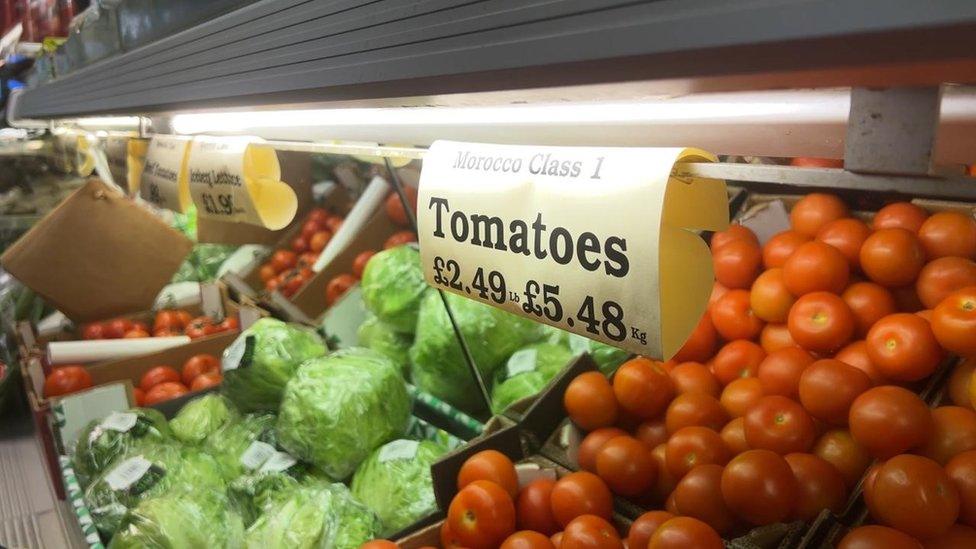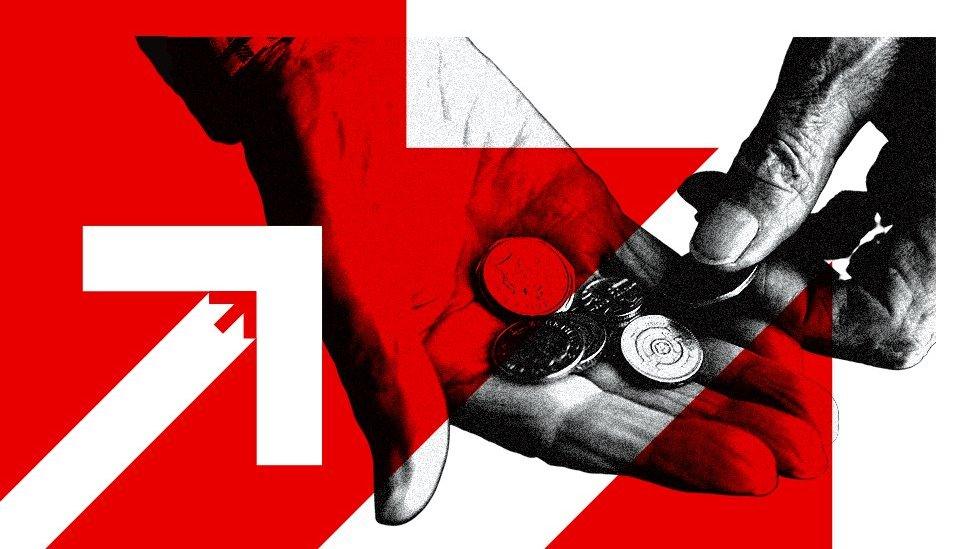NI economy: NI rate of inflation significantly below UK average, figures show
- Published

The figures show that the rate of inflation was lower in March because the majority of NI households use oil for home heating while other parts of the UK use gas
The rate of inflation in Northern Ireland in March was significantly below the average UK rate, experimental data suggests.
Figures from the Office for National Statistics (ONS) show the UK inflation rate was 10.1% while the rate in Northern Ireland was estimated at 7.5%.
This was because most Northern Ireland households use oil for home heating while other parts of the UK use gas.
Home-heating oil prices fell in March compared to the same month in 2022.
However the prices of gas did not.
The Northern Ireland inflation rate was also lower in January and February: it was 9.5% in both months compared to a UK average of 10.1% and 10.4%.
Inflation is the increase in the price of something over time.
Weighting on certain goods
The ONS calculates the rate by monitoring a 'basket' of goods and services that is representative of spending in the UK.
It assigns weighting to the items in the basket, which reflects the amount households spend on each good or service compared with their total consumption.
For example, the price of rice going up by 10% will not have the same impact on the overall inflation rate as the price of fuel going up by 10% would.
Similarly home-heating oil has a greater weight in Northern Ireland compared to other parts of the UK.
The ONS has been conducting an experiment to try to improve the accuracy of consumer price inflation estimates for Northern Ireland.
That has involved collecting more price data from retailers in Northern Ireland as well as adjusting the basket weights to more accurately reflect how people in Northern Ireland spend their money.
This could mean that while prices for individual items in Northern Ireland might be changing at the same rate as those in the UK, different spending patterns would cause a difference between the overall inflation rates.
The ONS has published a lengthy explanation of its methodology, external for estimating the Northern Ireland weights.
It said: "This pilot project has proven that it is possible to produce indicative regional consumer price inflation figures.
"However, it is important to note that this is still early work for producing a regional inflation figure and the estimates produced thus far are not yet considered robust enough for regular experimental production."
It has also emphasised that the experimental data should not be used for "policy or decision-making purposes".
Related topics
- Published19 April 2023

- Published22 March 2023

- Published14 February 2023
